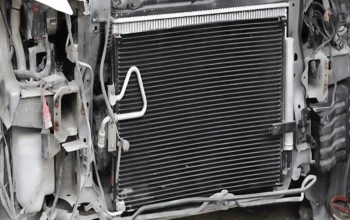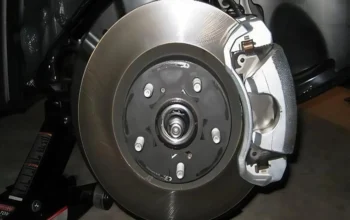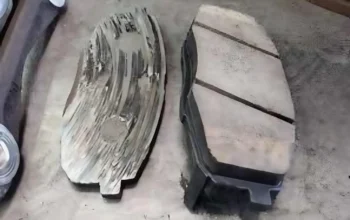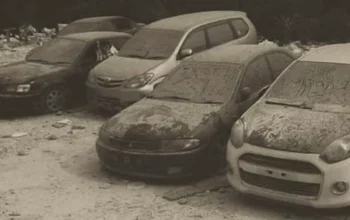Pena Global – If your car has started leaking coolant or you’ve noticed the temperature gauge creeping up more than usual, there’s a good chance you’re dealing with a cracked radiator. Specifically, most modern cars use plastic radiators because they’re lightweight and cost-effective, but they’re not immune to damage. Over time, exposure to high heat, vibration, and aging causes these radiators to weaken and crack. So if you’re wondering how to repair a radiator without rushing to the mechanic, you’re in the right place.
A plastic radiator crack can seem like a serious issue, but with the right tools and a bit of know-how, you can fix it at home. In this guide, we’ll walk through the different repair methods, how to apply them, when to replace instead of repair, and what to expect in terms of cost and durability. Whether you’re a beginner DIYer or a seasoned weekend mechanic, there’s something here for you.
Table of Contents:
Why Plastic Radiators Crack
Let’s start with why this even happens. Radiators play a crucial role in keeping your engine cool, circulating coolant between the engine and the radiator. Over time, that constant cycle of heating and cooling causes plastic components to expand and contract. Eventually, this stresses the material, especially if it’s older or made from low-quality plastic.
Other common causes include small front-end collisions, road debris hitting the radiator, or even overtightening hose clamps. Once the crack starts, coolant begins to leak out. You may notice puddles under your car, a sweet smell from the engine bay, or the temperature gauge rising even during short trips.
Don’t ignore these signs—coolant loss can quickly lead to overheating, engine damage, and even complete failure.
Is It Safe to Repair a Radiator Yourself?
Absolutely—if the damage is minor and you follow the right steps. The key is to assess the location and size of the crack. Most small to medium surface cracks on the plastic end tank can be repaired using epoxy sealant, a radiator patch kit, or plastic welding. But if the crack is near a hose outlet or spans a major structural area, it might be safer (and smarter) to replace the entire unit.
Still, for many situations, a DIY repair can save you hundreds of dollars and keep your car running smoothly.
What You’ll Need Before You Start
Before jumping into a radiator repair, gather your tools and take some safety precautions. You’re working with coolant, which can be toxic, and pressurized systems that should never be opened while hot.
Basic tools and items you’ll need include:
- A pair of gloves and protective goggles
- Coolant-safe container for draining
- Rags or paper towels for cleanup
- Epoxy or plastic repair kit
- Plastic welder (if using the welding method)
- Sandpaper or wire brush for surface prep
Make sure your engine is completely cool before you touch anything. Never open the radiator cap if the engine is warm—it’s under pressure and can cause serious burns.
How to Identify a Cracked Radiator
Sometimes, the crack isn’t immediately visible. Here are a few ways to spot radiator damage before it gets worse:
- Look for a white or light green residue on the radiator plastic—that’s dried coolant
- Inspect the plastic end tank for visible lines or hairline fractures
- Watch for steam or a coolant smell after driving
- Check the coolant level frequently—if it’s dropping without any visible puddles, the crack may be small but growing
Once you’ve confirmed the crack, it’s time to choose your repair method.
Different Ways to Repair a Plastic Radiator Crack
Each repair method has its own pros and cons. Choose the one that fits your comfort level, available tools, and the severity of the damage.
1. Use an Epoxy Sealant
One of the simplest and most affordable ways to repair a cracked radiator is with a high-temperature epoxy. These compounds are designed to seal gaps and harden into a durable material that can withstand heat and pressure.
To apply epoxy:
- Drain the coolant and dry the radiator thoroughly
- Clean and sand the cracked area to improve adhesion
- Mix and apply the epoxy evenly over the crack
- Let it cure for the full recommended time, usually 12–24 hours
- Refill the coolant and test for leaks
Epoxy works well for small cracks and is ideal for beginners. Just keep in mind that it might not hold forever, especially under extreme conditions or if applied to a dirty surface.
2. Try Plastic Welding
Plastic welding is more advanced but provides a stronger, more permanent bond. You’ll need a plastic welding kit, which is essentially a soldering iron with a special tip and plastic filler rods.
Here’s how it works:
- Clean the area and drain the radiator
- Use the welder to soften the crack and surrounding plastic
- Add filler material while melting both sides together
- Smooth it out and let it cool
This method is better for larger cracks or for repairs near hose fittings and joints. It’s not as quick as epoxy but can last longer if done correctly.
3. Use a Commercial Radiator Repair Kit
If you prefer an all-in-one solution, commercial radiator crack repair kits are available at most auto parts stores. These typically include:
- Epoxy or sealant
- Cleaning wipes
- Sandpaper
- Application tools
They’re designed for easy use and often include step-by-step instructions. Just make sure the kit you buy is rated for plastic radiators and high-heat applications.
Testing the Repair Job
After making the repair, it’s important to test everything before driving.
- Refill the radiator with coolant
- Start the engine and let it idle for 10–15 minutes
- Check for leaks under the car and around the repaired area
- Watch the temperature gauge to make sure the engine doesn’t overheat
If everything looks good, take it for a short drive and recheck when you return. Catching a failed seal early can save you from a bigger mess later.
Preventing Future Radiator Cracks
Keeping your radiator in good shape starts with regular maintenance. Here are a few simple habits that can help:
1. Maintain Coolant Levels
Low coolant levels increase pressure and heat, which accelerates cracking. Make it a habit to check levels every couple of weeks or before a long trip.
2. Flush Your Radiator Periodically
Old coolant becomes acidic over time and can damage internal components. A radiator flush every 1–2 years (or as recommended by your vehicle manual) can extend the life of your cooling system.
3. Watch the Temperature Gauge
If you notice your engine running hotter than usual, pull over. Don’t push it. High temperatures can warp plastic and create new cracks.
4. Avoid Over-Tightening Clamps
Hose clamps that are too tight can stress the plastic neck of the radiator. Tighten just enough to seal, but not so much that it crushes the fitting.
When to Repair vs. Replace
So, should you fix it or replace it entirely? Here’s a simple breakdown:
Repair if:
- The crack is small and on the surface
- It’s not near a joint or hose outlet
- The rest of the radiator is in good condition
Replace if:
- The crack is large or in a critical area
- There are multiple cracks forming
- The radiator is over 8–10 years old
- You’ve already tried patching it before
Replacing the radiator can cost anywhere from $300 to over $1,000, depending on your vehicle and labor costs. In contrast, a DIY repair could cost you as little as $10 to $50, especially if you already have some of the tools.
If your budget is tight or the car is a daily driver with light use, a well-done repair can be a great temporary (or even long-term) fix.
Final Thoughts
Repairing a plastic radiator crack might sound intimidating, but it’s totally doable with the right tools and a bit of patience. Whether you go with an epoxy sealant, try plastic welding, or grab a radiator patch kit, the key is preparation. A clean surface, proper curing time, and thorough testing make all the difference between a lasting fix and a leaky disaster.
Of course, sometimes repairs aren’t enough—and that’s okay. Knowing when to walk away from a fix and invest in a replacement can save you money and headaches in the long run.
So next time you see a small leak or hairline crack, don’t panic. You’ve got options—and you don’t need to be a pro to use them.






